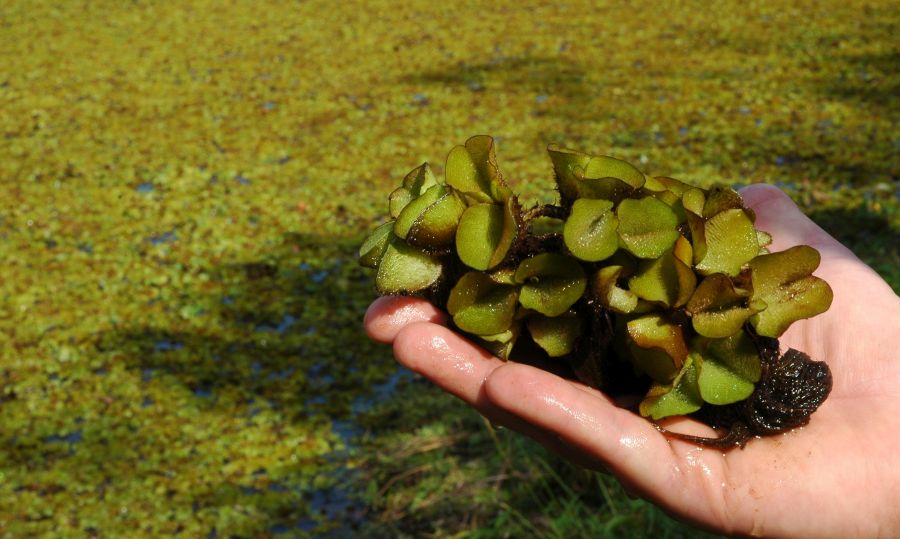
Source: Texas Parks and Wildlife Department | June 16, 2020
The Texas Parks and Wildlife Department (TPWD) confirmed the presence of giant salvinia on Bringle Lake in Texarkana after being alerted to a potential infestation of the invasive species.
Giant salvinia, a highly invasive, free-floating aquatic fern that can double in size in less than a week under ideal growing conditions, is one of the major threats to aquatic ecosystems in Texas. The invasive plant produces thick mats making fishing, boating, swimming, and other water recreation nearly impossible. While giant salvinia is currently not limiting angling or boating access in Texas public waters, there is still a chance of plants hitchhiking from one lake to another on a boat, trailer, or other equipment.
“Managing the Bringle Lake giant salvinia infestation will be challenging as the plant has spread throughout much of the lake and is mixed with numerous aquatic plant species. We should be able to gain control of this infestation this summer, but eradication is likely impossible,” said John Findeisen, TPWD’s Aquatic Habitat Enhancement Team Leader in Brookeland.
Use of giant salvinia weevils at Bringle Lake is not a control option, as the weevils will not survive the colder, winter temperatures in that part of the state. This leaves the heavy lifting for control to herbicides and mechanical removal. TPWD is looking to conduct the first herbicide treatment at the end of June 2020, focusing on mats of giant salvinia.
“Our goal is to gain control of the salvinia on Bringle Lake as quickly as possible,” Findeisen said. “Controlling giant salvinia when mixed with other aquatic plants can be complicated, especially when those other species comprise the majority of the aquatic habitat. In order to protect non-target, aquatic plants, we will have to limit herbicide use in these areas and rely on other management techniques such as physical removal.”
Anglers and boaters recreating on any of the 21 lakes infested with common or giant salvinia should be particularly vigilant about taking preventive actions since both species spread easily and grow rapidly. “We need lake users to thoroughly clean, drain, and dry their boats and equipment before leaving the boat ramp to prevent new infestations at other East Texas lakes,” added Findeisen.
All anglers, boaters, and lake-front property owners should learn to identify both common and giant salvinia as well as other invasive species that occur in Texas waters. The transport of aquatic invasive species can result in legal trouble for boaters. Transporting prohibited invasive species in Texas is illegal and punishable with a fine of up to $500 per violation. Boaters are also required to drain all water from their boat and onboard receptacles, including bait buckets, before leaving or approaching a body of fresh water.
For more information on how to properly clean, drain and dry boats and equipment, visit the TPWD YouTube channel for a short instructional video or see below. To learn more about common and giant salvinia along with other invasive species in Texas, visit tpwd.texas.gov/landwater/stop-invasives/.
TPWD and partners monitor for invasive species in Texas lakes, but anyone who finds them in lakes where they haven’t been previously found, or who spots them on boats, trailers or equipment being moved should help prevent new introductions by reporting the sighting to TPWD at (409) 698-9121 ext. 235 or by emailing photos and location information to [email protected].
